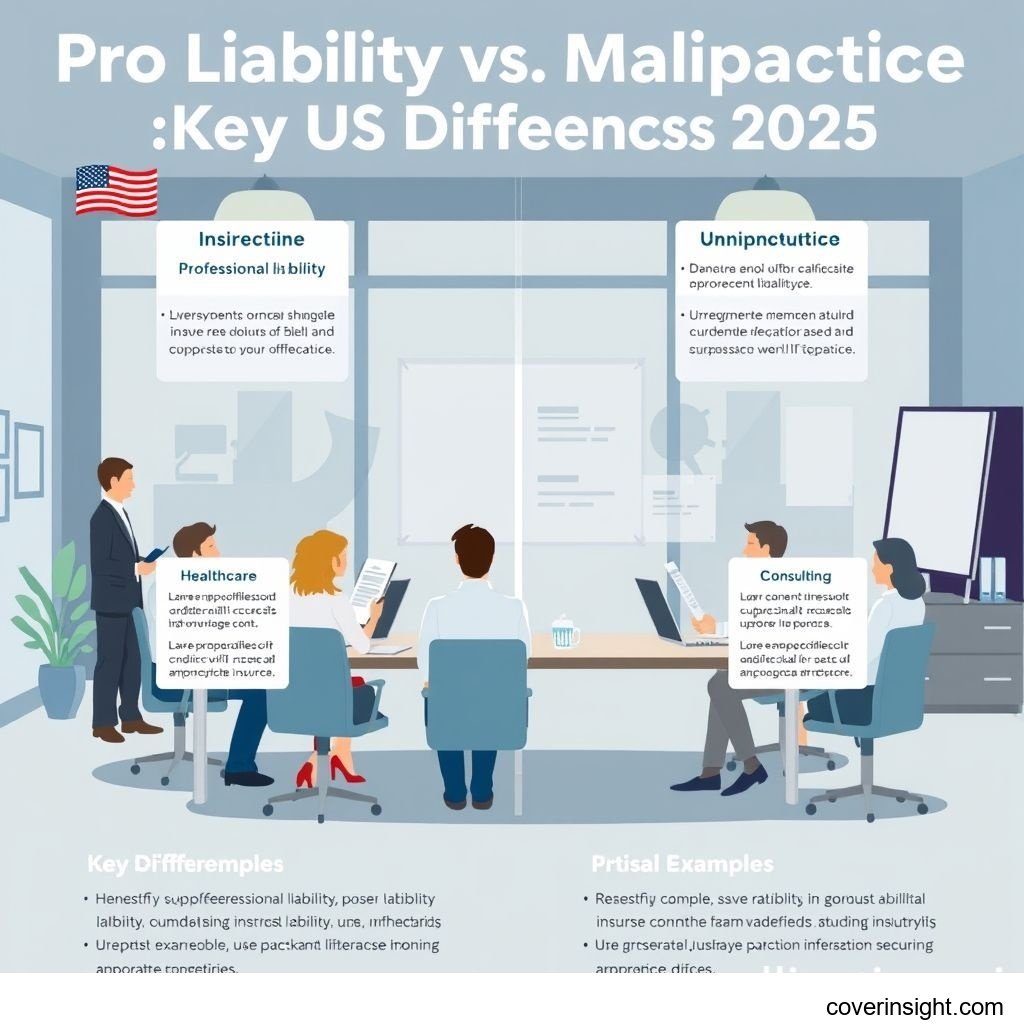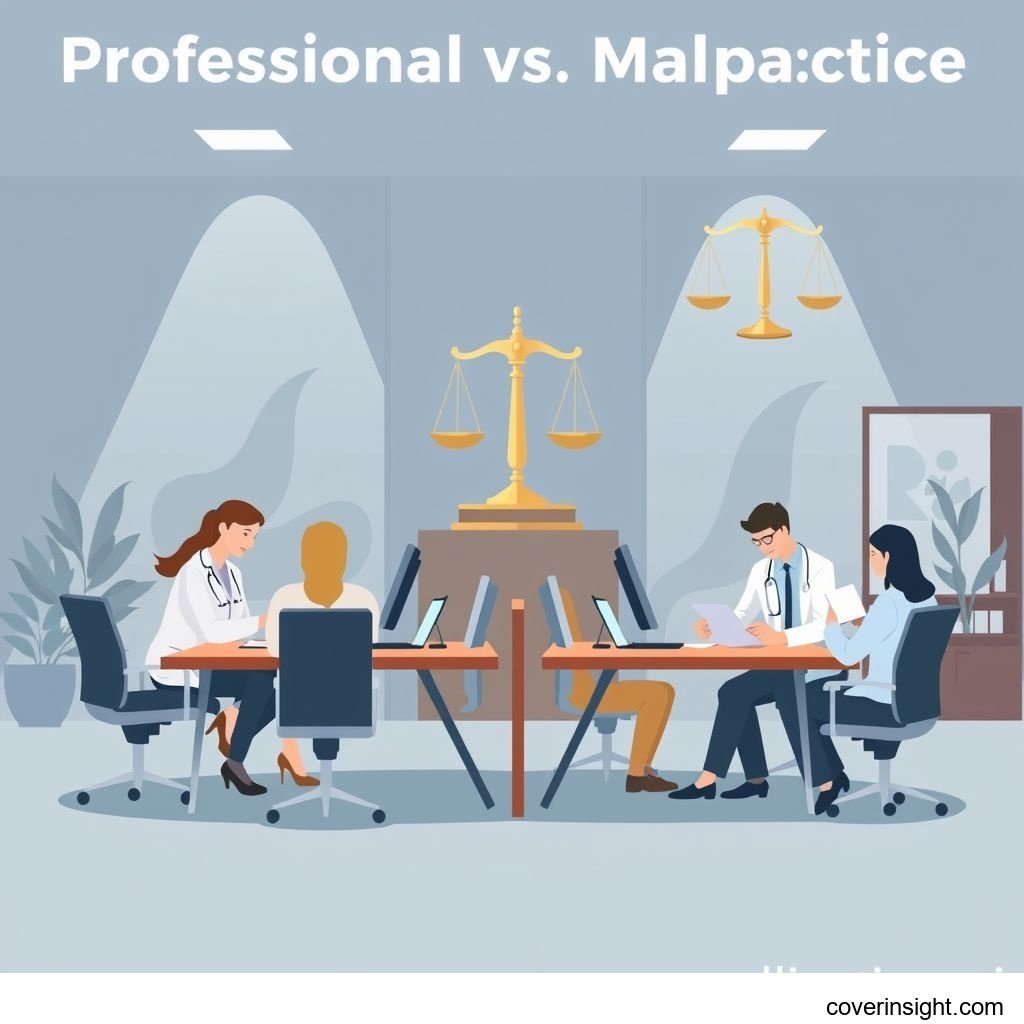Pro Liability vs Malpractice: Key US Differences 2025
Introduction
In the dynamic landscape of the United States in 2025, professionals across various sectors face an ever-present risk of lawsuits stemming from their services. Understanding the nuances between professional liability insurance and malpractice insurance is not just a matter of semantics; it's crucial for safeguarding your career, your financial well-being, and your reputation. While often used interchangeably, these two types of coverage address distinct, though sometimes overlapping, sets of risks. Both are designed to protect you against claims of negligence, errors, or omissions in the professional services you provide, yet their application and scope can differ significantly depending on your specific profession and the nature of the alleged wrongdoing. Getting this right isn't just about compliance; it's about having that crucial safety net when you need it most.
Coverage Details
What’s Included
Professional liability insurance, often referred to as Errors & Omissions (E&O) insurance, is a broad category designed for a wide range of professionals, including consultants, architects, real estate agents, IT service providers, graphic designers, and even event planners. It primarily covers claims arising from mistakes, negligence, or failure to perform professional duties that result in financial loss for a client. This could include bad advice, an oversight in a financial report, a software bug, or a design flaw. It typically covers legal defense costs, settlements, and judgments.
Malpractice insurance, on the other hand, is a specific type of professional liability coverage tailored for highly specialized, licensed professions where errors can lead to significant physical harm or profound financial loss. This predominantly applies to healthcare professionals (doctors, dentists, nurses, hospitals), legal professionals (lawyers), and sometimes accountants or engineers. For medical professionals, it covers claims of bodily injury, illness, or death directly resulting from negligent acts or omissions in patient care. For lawyers, it might cover errors in legal advice that cost a client a lawsuit or a substantial sum. Regardless of the specific profession, both types of policies are designed to cover your legal defense costs, settlements, and judgments, ensuring you’re not left out in the cold when a claim arises.
Common Exclusions
While robust, no insurance policy covers everything. Both professional liability and malpractice insurance typically exclude intentional criminal acts, fraudulent activities, and claims arising from bodily injury or property damage not directly related to the provision of professional services (these would usually fall under a general liability policy). Claims made prior to the policy's effective date are also generally excluded unless "prior acts" coverage is specifically added. Punitive damages, while sometimes sought by claimants, are often excluded from coverage, though this can vary by state and policy wording. Furthermore, cyber risks (like data breaches) and employer liability (like wrongful termination suits) are almost always excluded, requiring separate, specialized policies.
More specifically, professional liability policies often won't cover general business risks, such as contract disputes not stemming from professional negligence or personal injury claims unrelated to professional advice. Malpractice policies, in particular, will typically exclude claims related to sexual misconduct, fee disputes, or services provided outside the scope of your professional license. For a broader understanding of insurance types and their global implications, explore our resources at Insurance Resources Global.
Cost Analysis
Price Factors
The cost of professional liability versus malpractice insurance can vary wildly, largely depending on the inherent risk associated with your profession. For instance, a neurosurgeon will undoubtedly pay a significantly higher premium for malpractice insurance than a marketing consultant will for professional liability coverage.
Key factors influencing premiums include:
-
Profession and Specialty: High-risk fields like surgery, obstetrics, or high-stakes legal practice command the highest premiums.
-
Location: States with more litigious environments or specific legal precedents often have higher rates. According to data compiled by the National Association of Insurance Commissioners, medical malpractice insurance alone accounts for billions of dollars in direct premiums written annually across the U.S., highlighting its critical role in the healthcare landscape.
-
Coverage Limits and Deductibles: Higher coverage limits (the maximum payout) naturally mean higher premiums, while choosing a higher deductible (your out-of-pocket contribution before coverage kicks in) can lower your premium.
-
Claims History: A history of previous claims will almost certainly increase your future premiums.
-
Experience and Training: More experienced professionals with clean records might pay less, while newly licensed individuals or those with less specialized training might face higher initial costs.
-
Risk Management Practices: Implementing robust protocols, continuous training, and utilizing advanced technology (e.g., electronic health records in healthcare) can demonstrate a commitment to risk reduction and potentially lower your rates.
-
Business Size and Revenue: Larger firms or those with higher revenue typically face greater exposure and thus higher premiums.
Saving Tips
Navigating the costs of these essential coverages requires a strategic approach. Here are some tips to help you save:
-
Shop Around: Don't settle for the first quote. Obtain proposals from multiple insurers to compare coverage and pricing.
-
Implement Robust Risk Management: Show insurers you're serious about minimizing risk. This includes regular training, clear protocols, and documented best practices.
-
Adjust Deductibles: If your business has healthy cash reserves, consider opting for a higher deductible to lower your annual premium.
-
Professional Association Discounts: Many professional organizations offer group insurance rates or recommend specific insurers with discounted programs for their members.
-
Maintain a Clean Claims History: This is perhaps the most significant long-term saving tip. Diligence and adherence to best practices can prevent claims that would otherwise escalate your premiums.
FAQs
How much does professional liability vs malpractice cost? The cost is highly variable. Professional liability insurance can range from a few hundred dollars to several thousand dollars annually for most consultants or small service businesses. Malpractice insurance, particularly for high-risk medical specialists, can easily reach tens of thousands or even hundreds of thousands of dollars per year. For more detailed information tailored to the American insurance landscape, visit US Insurance Home.
What affects premiums? As discussed, premiums are influenced by a multitude of factors including your profession's inherent risk, your geographic location, your claims history, the amount of coverage you choose, and your deductible. The more risk an insurer perceives, the higher your premium will likely be.
Is it mandatory? For many licensed professions, particularly in healthcare and law, malpractice insurance is either legally mandated by state licensing boards or required by hospitals, clinics, or firms before you can practice. For other professions, while not legally mandatory, professional liability insurance is often a contractual requirement from clients, especially for larger projects. Beyond legal or contractual obligations, it's a sound business practice for virtually any professional offering services. A 2023 report from the Bureau of Justice Statistics indicated that tort cases, which include various professional negligence claims, consistently represent a significant portion of the civil caseloads in state courts nationwide, emphasizing the persistent risk of litigation for professionals.
How to choose? Choosing the right policy involves a careful assessment of your specific professional risks, understanding the scope of your services, and thoroughly reviewing policy inclusions and exclusions. It's wise to consult with an experienced insurance broker who specializes in professional lines. They can help you identify adequate coverage limits, explain the nuances of different policies, and compare quotes from various carriers. Those seeking information on healthcare services and related insurance options might find helpful insights at Healthcare.gov.
Consequences of no coverage? Operating without adequate professional liability or malpractice coverage is akin to playing with fire. The consequences can be catastrophic: personal financial ruin from legal fees, settlements, or judgments; loss of your professional license; irreparable damage to your professional reputation; and the inability to secure future clients or employment, as many will require proof of coverage. Imagine the hypothetical case of "Smith & Associates," a small accounting firm in Ohio. An error in auditing a client's books led to a multi-million dollar tax penalty for the client. Thankfully, Smith & Associates had robust professional liability insurance. Their policy covered the extensive legal defense costs and ultimately the settlement, preventing the firm from bankruptcy. In contrast, imagine "Dr. Lena Chen" in California, a surgeon who faced a serious malpractice suit following a complicated procedure. Her malpractice insurance not only provided the legal team to defend her but also the financial backing for a substantial settlement, allowing her to continue her practice with peace of mind, albeit after a challenging period. Without insurance, both would have faced devastating financial and professional consequences. For state-specific regulations and consumer assistance, always check your State Insurance Departments website.
As someone who has navigated the complexities of business in the US, I've seen firsthand how quickly a professional misstep can turn into a financial catastrophe without the right safeguards. Based on my experience, understanding the nuances between professional liability and malpractice isn't just about ticking a box; it's about building a robust shield around your career and your life's work. The peace of mind that comes with knowing you’re adequately protected allows you to focus on what you do best, rather than constantly looking over your shoulder for potential legal challenges. It's truly a non-negotiable investment in today's litigious environment.
Further reading: Insurance Resources Global
Further reading: US Insurance Home








Comments